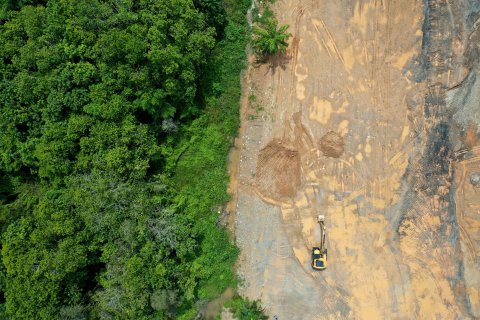NASA, IBM and Oak Ridge National Laboratory have shared a new AI model for a variety of weather and climate use cases.
This new open-source model – Prithvi WxC – is designed to address challenges related to short-term weather and long-term climate projection in a flexible, scalable way. It is being made available to scientific, developer and business communities through Hugging Face.
The potential applications of this new AI model include creating targeted forecasts based on local observations, predicting severe weather patterns, improving the spatial resolution of global climate simulations and improving how physical processes are represented in weather and climate models.
The development of this new open-source model stems from a partnership IBM and NASA announced last year to get more insight from NASA’s large amounts of Earth observation data through the power of AI.
The new model was pre-trained on 40 years of data from NASA’s Modern-Era Retrospective analysis for Research and Applications, Version 2 (MERRA-2). The agencies said the model’s unique architecture means it can be fine-tuned to global, regional and local scales, making it suitable for various weather studies.
“Advancing NASA’s Earth science for the benefit of humanity means delivering actionable science in ways that are useful to people, organisations and communities,” said Dr Karen St Germain, director of the Earth science division of NASA’s science mission directorate. “The rapid changes we’re witnessing on our home planet demand this strategy to meet the urgency of the moment.
“The NASA foundation model will help us produce a tool that people can use: weather, seasonal, and climate projections to help inform decisions on how to prepare, respond and mitigate.”
IBM and NASA said last year that they were working on several projects to extract new insights from Earth observation data.
For example, IBM plans to train a foundation model on NASA’s Harmonized Landset-Sentinel-2 dataset, which contains information about land cover and land use changes captured by satellites.
Leigh Mc Gowran
This article originally appeared on www.siliconrepublic.com and can be found here
This new open-source model – Prithvi WxC – is designed to address challenges related to short-term weather and long-term climate projection in a flexible, scalable way. It is being made available to scientific, developer and business communities through Hugging Face.
The potential applications of this new AI model include creating targeted forecasts based on local observations, predicting severe weather patterns, improving the spatial resolution of global climate simulations and improving how physical processes are represented in weather and climate models.
The development of this new open-source model stems from a partnership IBM and NASA announced last year to get more insight from NASA’s large amounts of Earth observation data through the power of AI.
The new model was pre-trained on 40 years of data from NASA’s Modern-Era Retrospective analysis for Research and Applications, Version 2 (MERRA-2). The agencies said the model’s unique architecture means it can be fine-tuned to global, regional and local scales, making it suitable for various weather studies.
“Advancing NASA’s Earth science for the benefit of humanity means delivering actionable science in ways that are useful to people, organisations and communities,” said Dr Karen St Germain, director of the Earth science division of NASA’s science mission directorate. “The rapid changes we’re witnessing on our home planet demand this strategy to meet the urgency of the moment.
“The NASA foundation model will help us produce a tool that people can use: weather, seasonal, and climate projections to help inform decisions on how to prepare, respond and mitigate.”
IBM and NASA said last year that they were working on several projects to extract new insights from Earth observation data.
For example, IBM plans to train a foundation model on NASA’s Harmonized Landset-Sentinel-2 dataset, which contains information about land cover and land use changes captured by satellites.
Leigh Mc Gowran
This article originally appeared on www.siliconrepublic.com and can be found here
